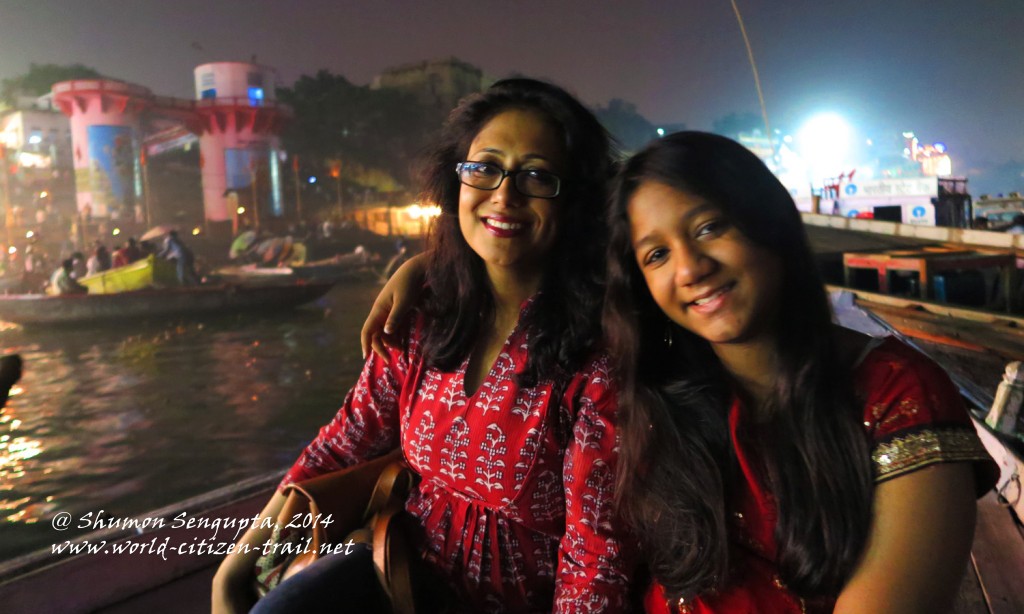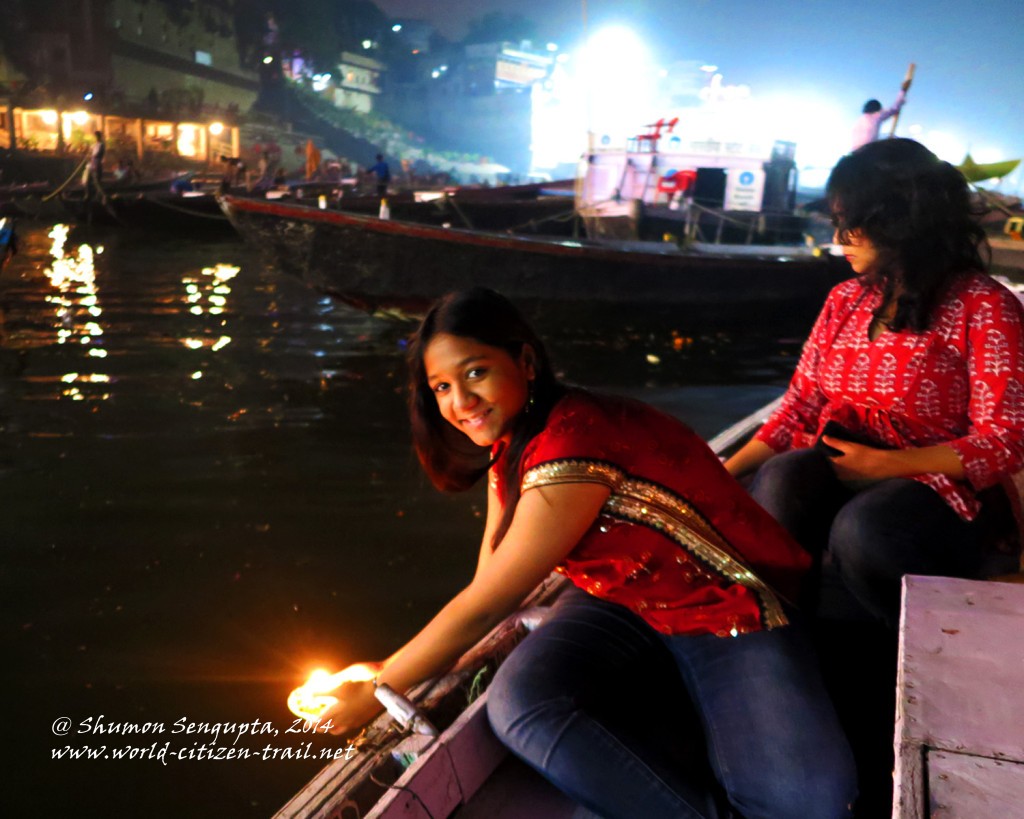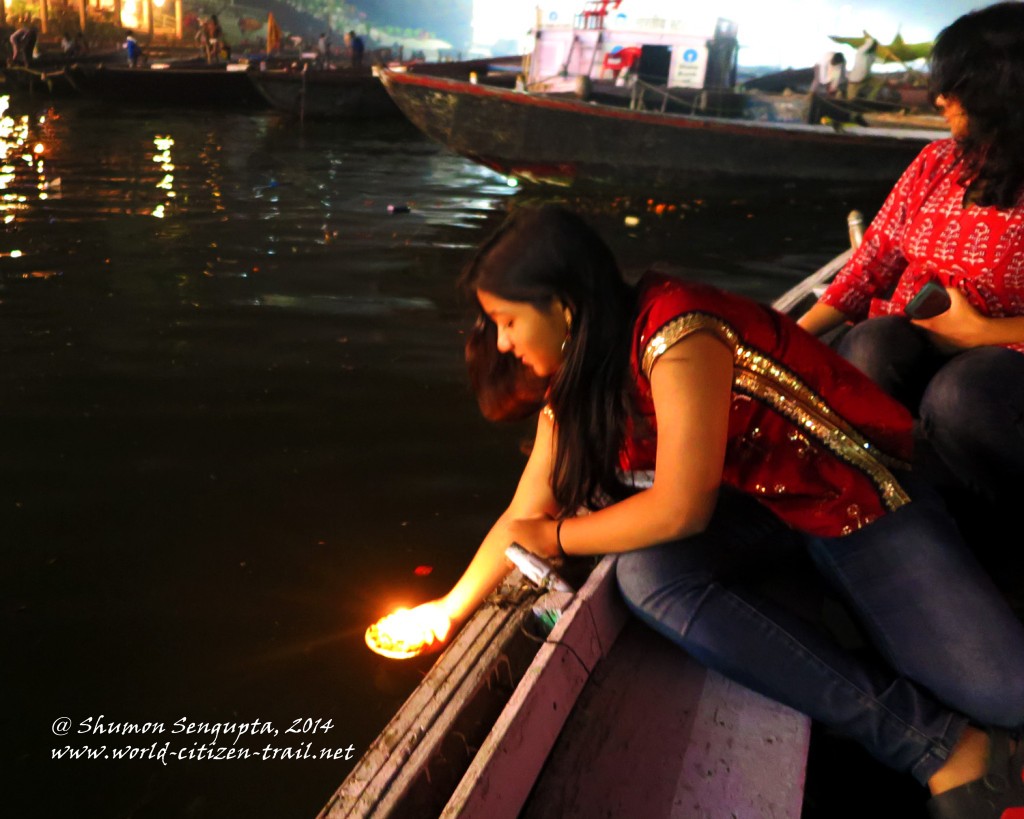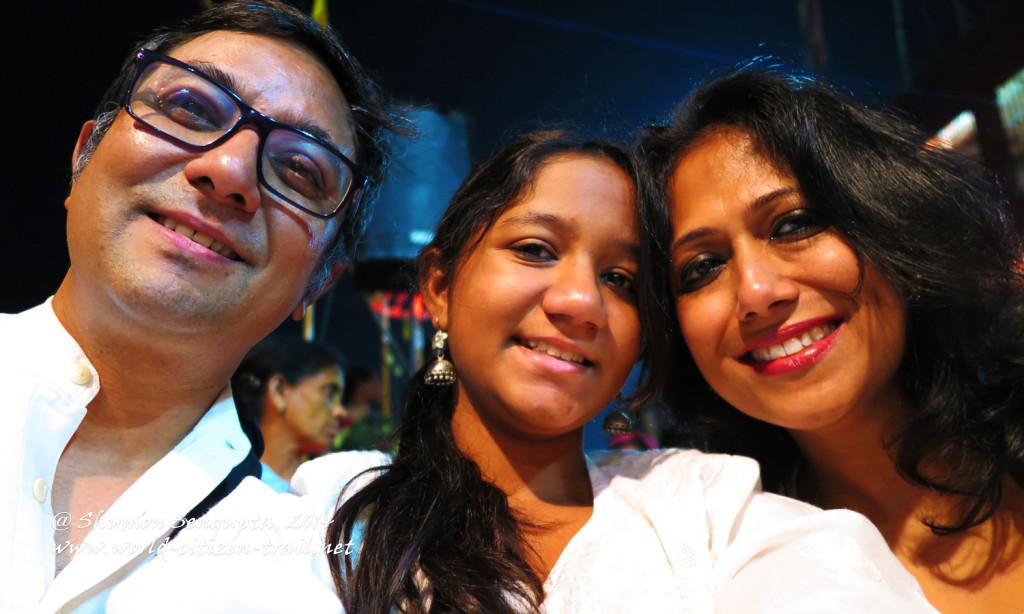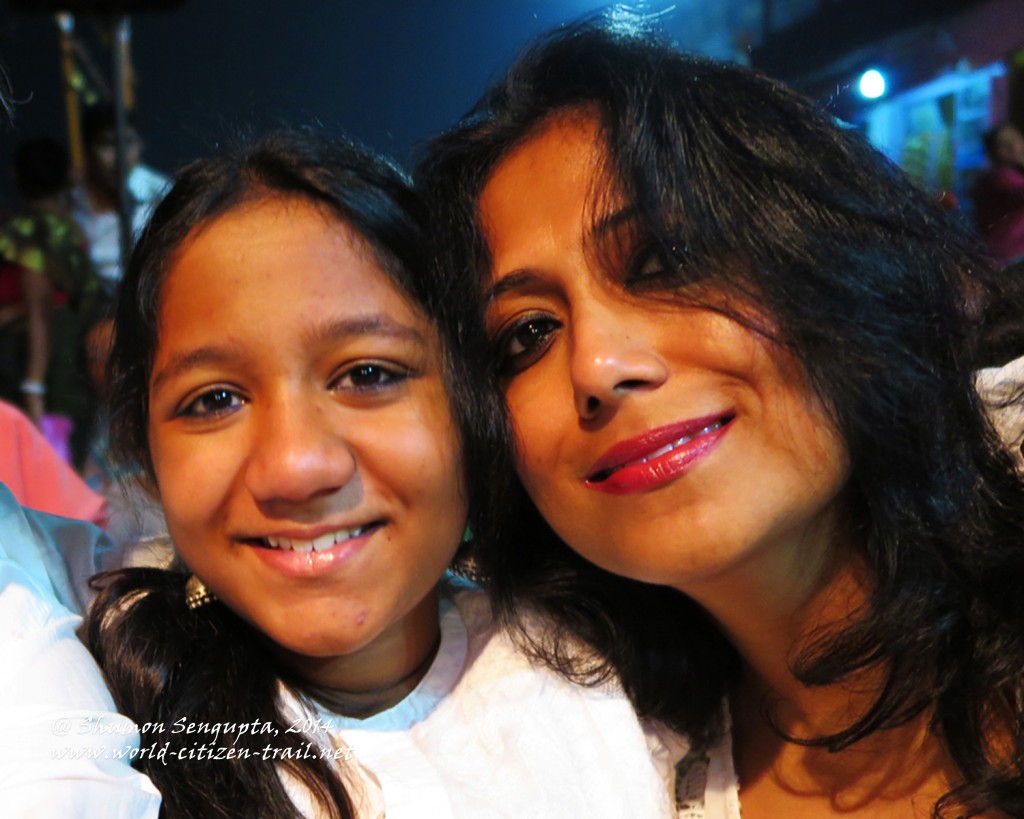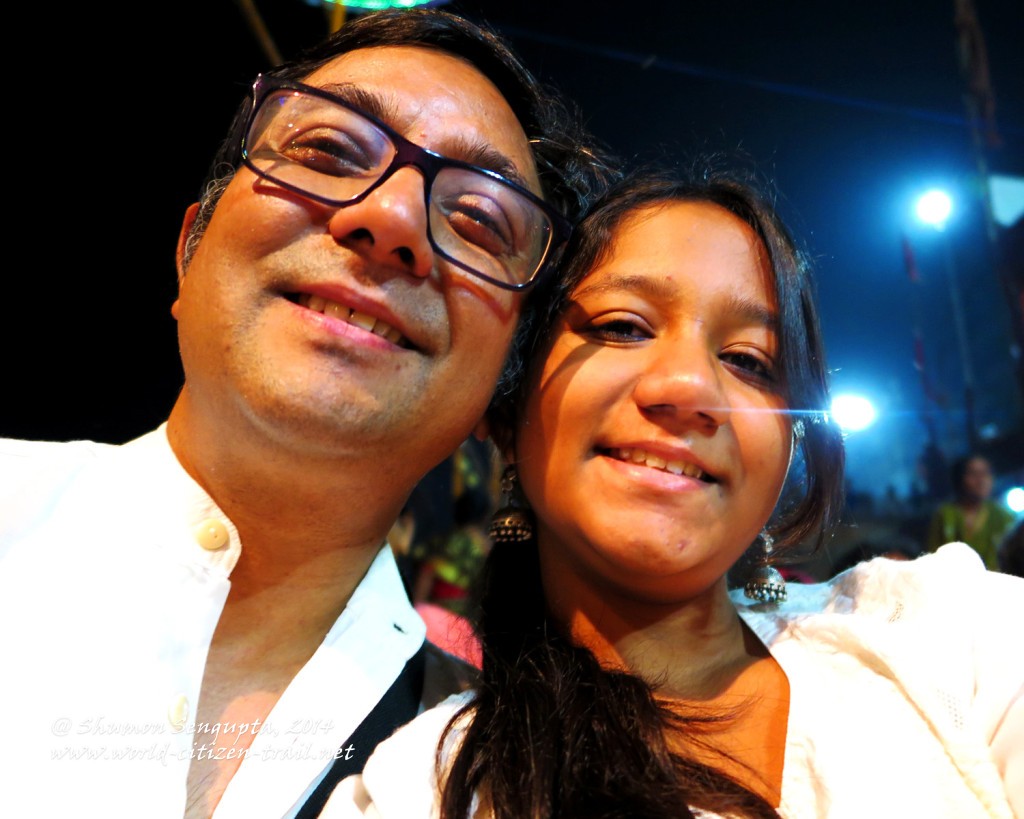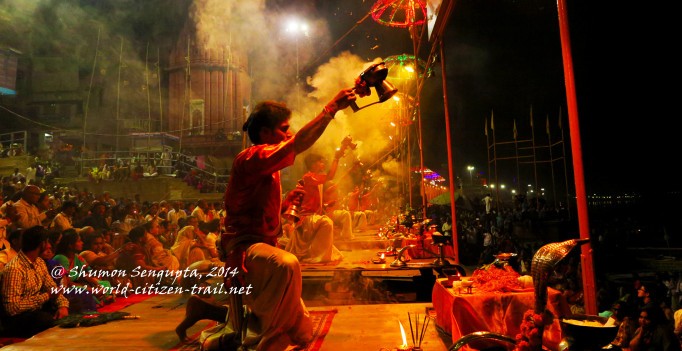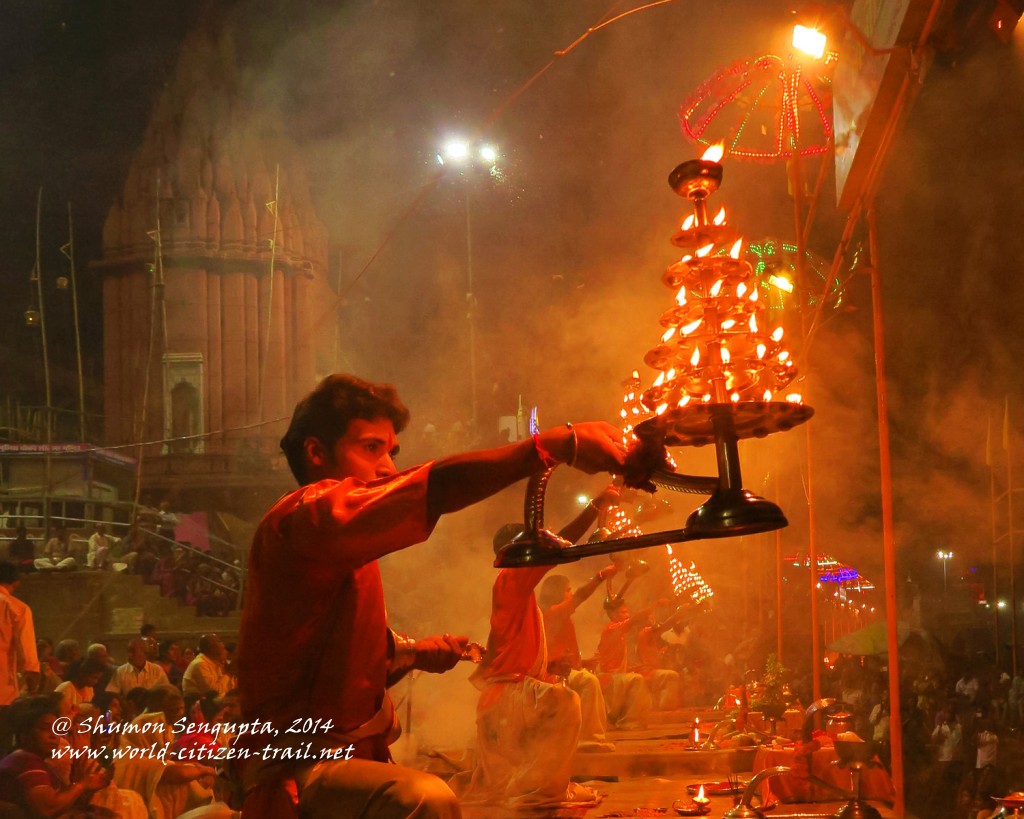
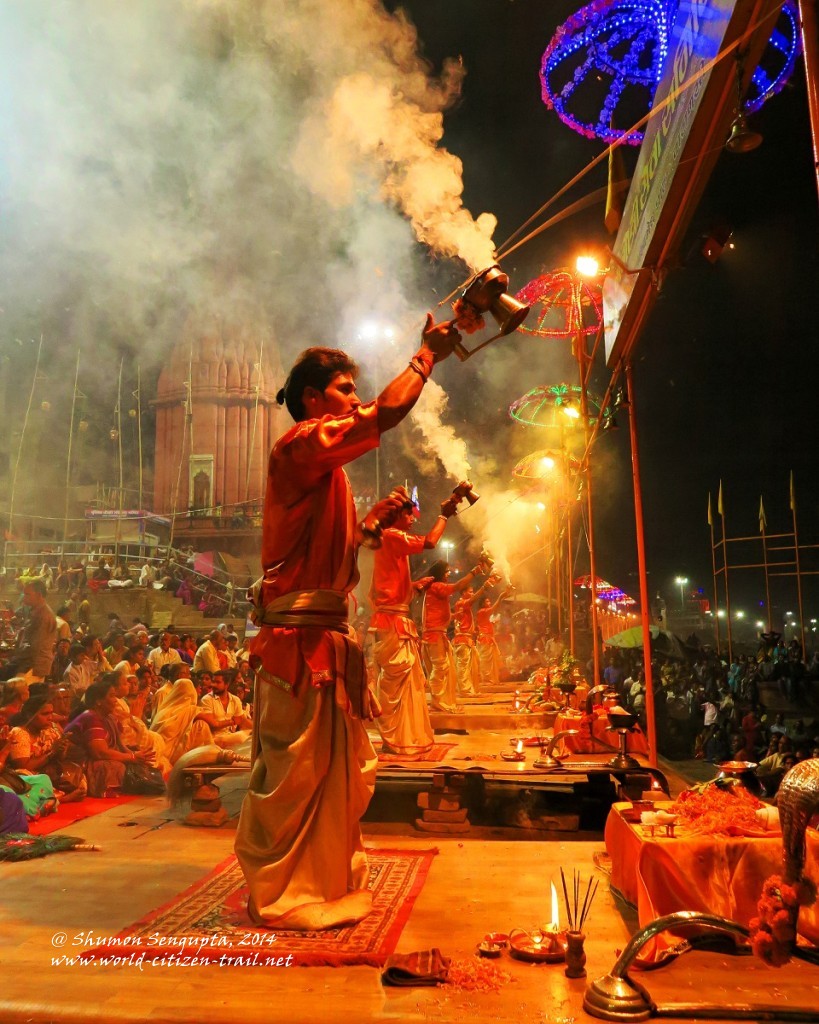

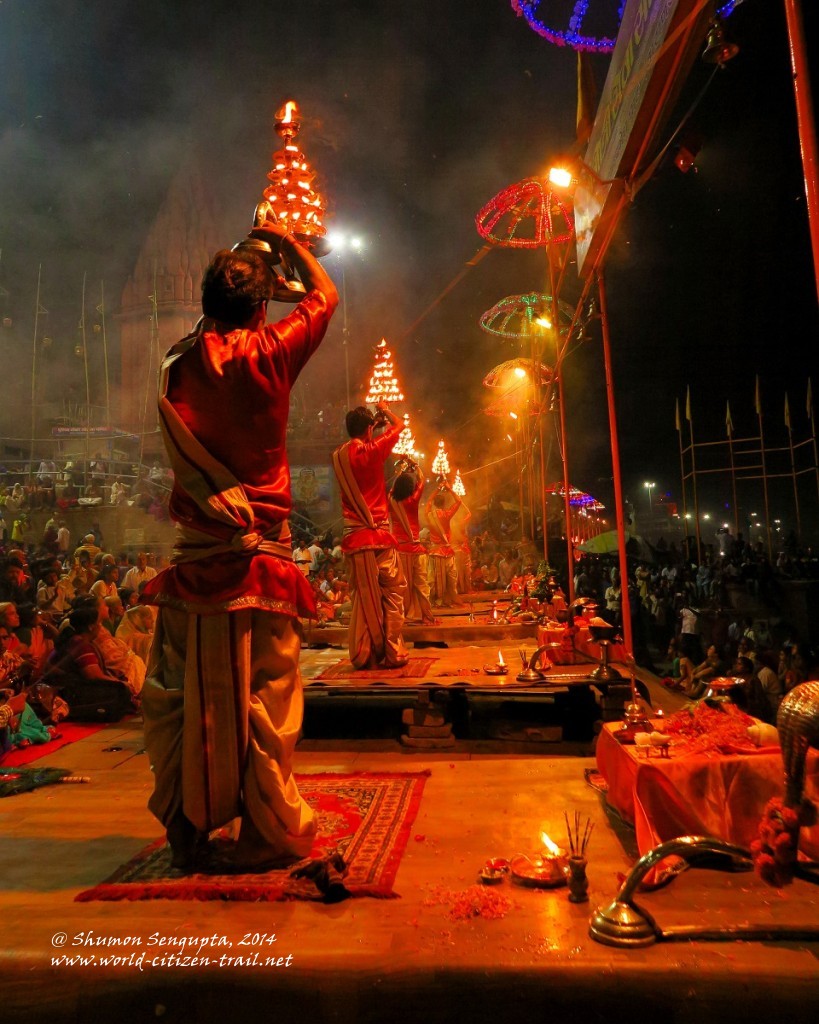
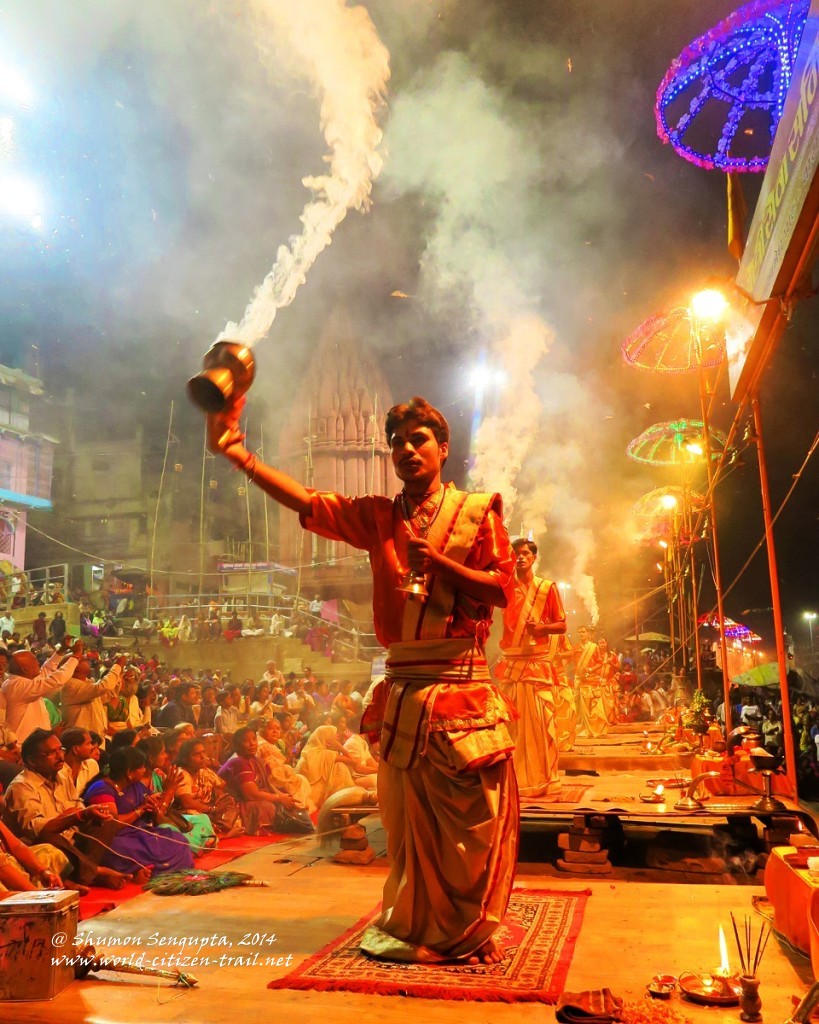
The study or religion and the study of art reveal a strong relationship between the two and in Hinduism this relationship is as strong as it is comprehensive, rich and enduring.
Art has always been an integral part of Hinduism in terms of a profusion of sacred architecture, symbols, objects and images (painting and sculpture); the practice of music and dance; Hindu mythology and literature, and a profoundly rich tradition of storytelling. All these elements combine to represent an aesthetic complex which has been used by Hindus as a means of devotion – as aids to worship.
Hinduism is a religion of intricate and highly symbolic rituals. Visually, these rituals include a dynamic play of light (lamps), colors, textures, hand gestures, and body postures and movements. These rituals include a strong element of aesthetic pursuit.
In terms of the auditory sensation, Hindu rituals involve vocal chants / music, gongs, bells, cymbals, drums, other musical instruments and blowing of the conch. Rhythmic patterns, pitch, intensity, tone and tempo of sounds (combined with silence) produced by various idiophones form an integral part of Hindu ritual worship.
In terms of the olfactory sense, the smell of incense, flowers, fragrances, camphor, raisins, oils, clarified butter, vermillion, and fragrant herbal products (sandal, turmeric etc.) are of great importance in Hindu ritual worship.
And then, there is the tactile experience in terms of physical handling of ritual objects, materials, textures, and elaborate rituals of ablutions, anointment and adornment which involve an intimate use of hands and the sense of touching and feeling. And finally, the sense of taste finds extensive expression in terms of a wide range or ritual food that is prepared, offered to the Gods and then shared by devotees.
The visual, auditory, olfactory, taste and tactile experiences of Hindu ritual worship hold significant artistic merit. The impact of these rituals, its exuberant aesthetics can therefore lead to profound and joyous ‘bhAva‘, or an ecstatic state of mind which in turn engenders what is called ‘rasa’ – a complex array of emotional flavors or essence – in other words – spiritually uplifting experiences.
And by the phrase “spiritually uplifting”, I don’t necessarily mean it to be a state of “divine realization” or “religious frenzy”, which may well be the case with many Hindus. I mean it primarily as a state in which our spirits are lifted, when the mind momentarily forgets the realities of our physical existence and transcends into a realm of unadulterated bliss or ecstasy.
In Hindu rituals, it is often very difficult to distinguish between what is “religious” and what is “secular”, primarily because the aesthetics of these rituals straddle both the “worldly” as well as the “transcendental” domains.
Yet, seen from a different perspective, Hindu Art and Culture can be a phenomena on its own right, potentially distinct from Hindu theology. I believe Hindu culture can be appreciated and enjoyed independently and universally, whether one is an adherent of the religion or not. A very good example of this is the instance of a devout Indonesian Muslim appreciating and enjoying, independent of his personal faith, a performance of a traditional Indonesian ballet depicting a story from the Hindu epic of Ramayana or the Mahabharata.
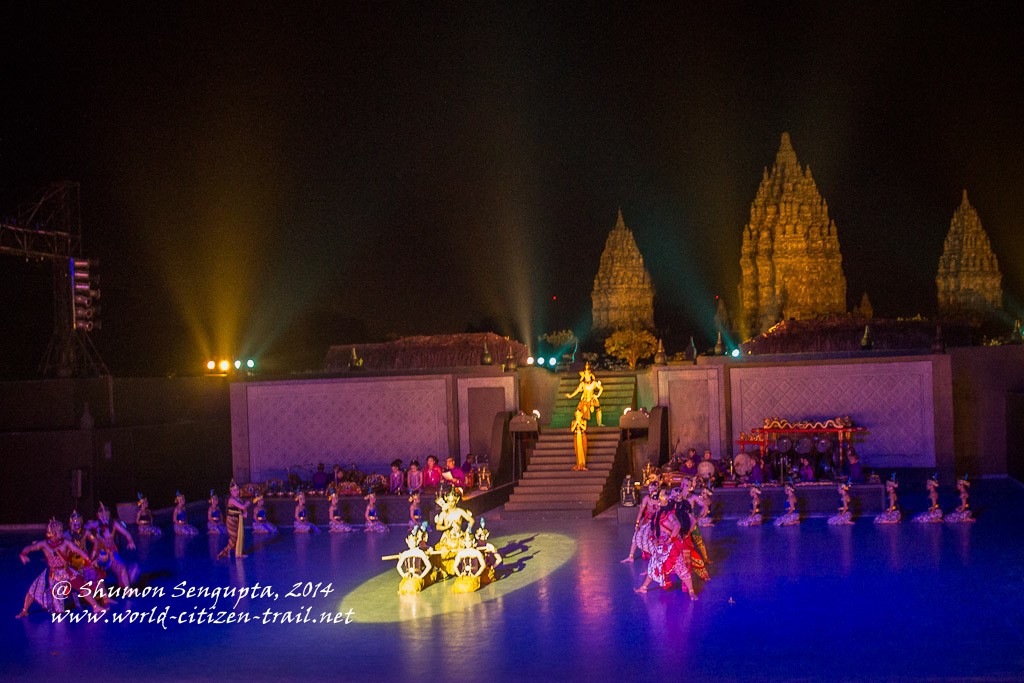
Source: http://www.timetravelturtle.com/2013/03/ramayana-ballet-yogyakarta-indonesia/
Another good example is of the predominantly Buddhist Nation – Thailand, installing an iconic sculpture of the “Samudra-manthan” (Churning of Milk Ocean) from Hindu mythology, at the Suvarnabhumi International Airport in Bangkok.
Recently, during our trip to Varanasi (or Benaras or Kashi), we witnessed the spectacular Hindu ritual called the ‘Ganga Aarti’ held at the banks of the River Ganges.
The city of Varanasi, as many of you may know nestles on the banks of River Ganges in the North Indian State of Uttar Pradesh. It is one of the oldest continuously inhabited cities in the world and to give you a sense of its antiquity – it was already an ancient city during the time of the Buddha, born more than 500 years before Christ was born. Archaeological evidence suggests that a settlement existed as early as the 12th century BCE.
Since ancient times, Varanasi has remained the most important center of Hindu spirituality and culture and has been an important seat of Hindu intellectuals. River Ganges is considered of divine origin and hence held as deeply sacred by Hindus. While being the spiritual and cultural capital of Hindus Varanasi is also holy to Jainism and also played an important role in the development of Buddhism.
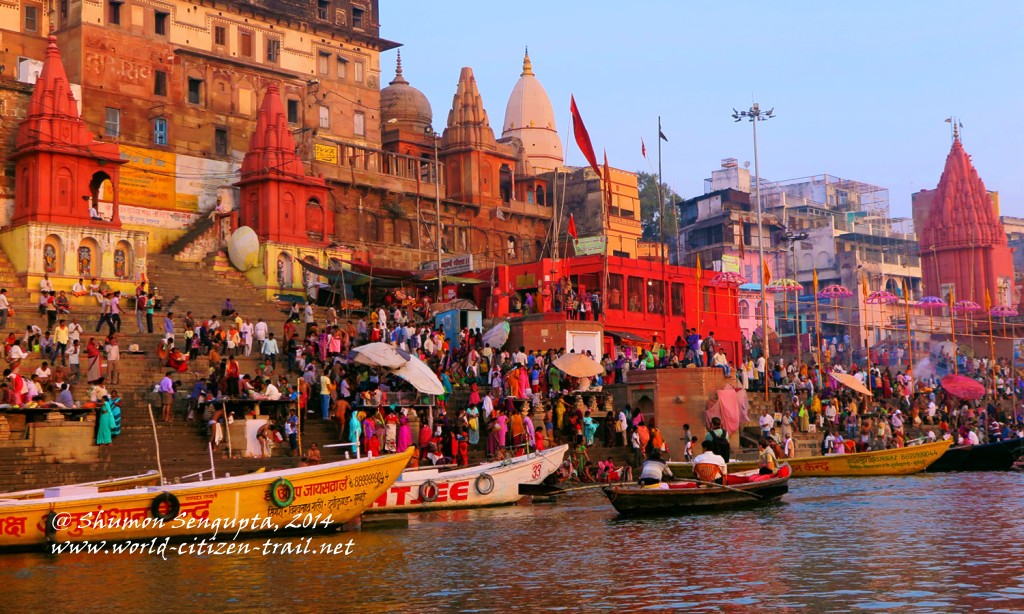
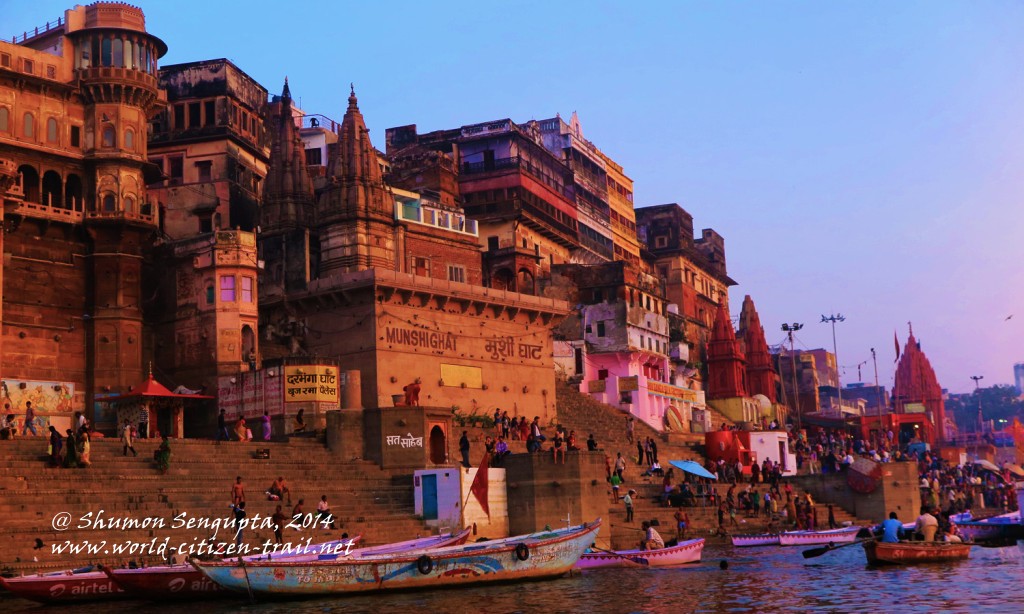
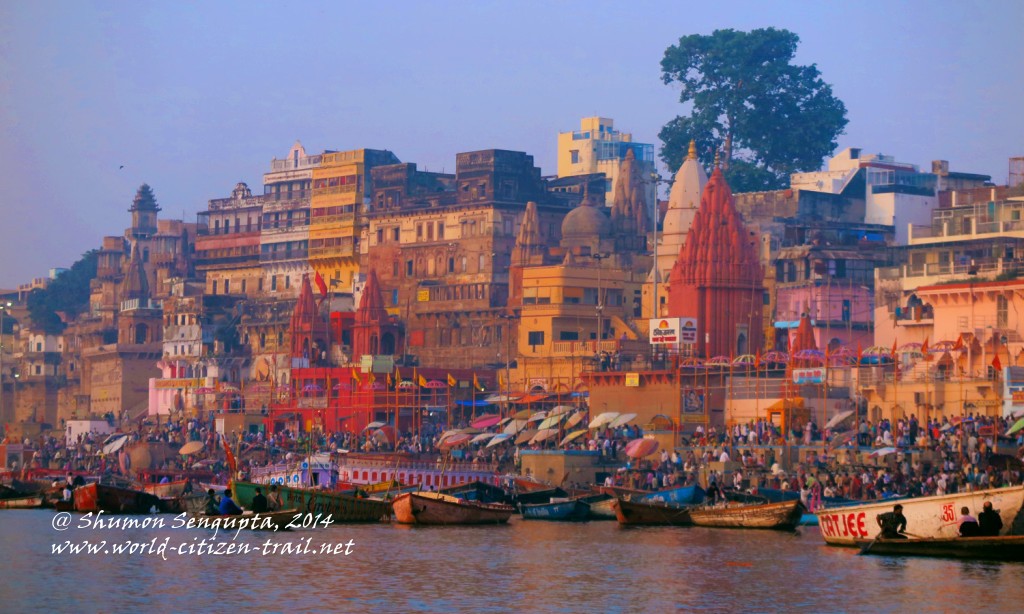
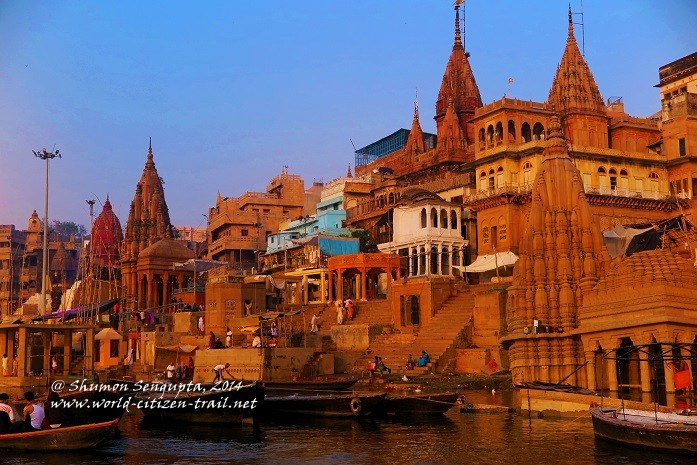
We saw the ‘Ganga Aarti’ at two places – one that is held daily at the crack of dawn on the Assi Ghat (Ghat, meaning stepped embankments meant for ritual baths and worship) the other held daily in the evening at the Dasashwamedh Ghat,
In short, the word Aarti (also spelt as Aarati) comes from the Sanskrit word “Aratrika” – meaning a ritual that dispels darkness. This Hindu ritual worship traces its origins back to the Vedic time (circa 2000 BCE) and holds deep symbolic value for Hindus. The various ingredients of an Aarti ritual includes water, flowers, lamps, incense, bells and various other ritual objects.
During this ritual, the “pancha-bhuta” or the five elements of nature – earth, water, fire, wind and space/sky – i.e. the fundamental elements of material existence and creation (as per the Hindu world view) are invoked and consecrated. Along with this, the worshipper is also expected to surrendering the ego.
This ritual can potentially express a wide range of emotions including love, devotion, obeisance, gratitude or thanksgiving to a particular God or a group of Gods/Deities, for the benevolence and grace bestowed on humankind, or it can be a part of a prayer for seeking positive energy, strength and peace of mind.
Flowers used in the ritual are a symbol of earth. Water, sprinkled from a small conch shell represents the liquid state in nature. Lamps represent fire (and heat). The synchronized waving of the fan made of peacock-feather represents the element of air. The movement and the white yak-tail fan represents space or sky.
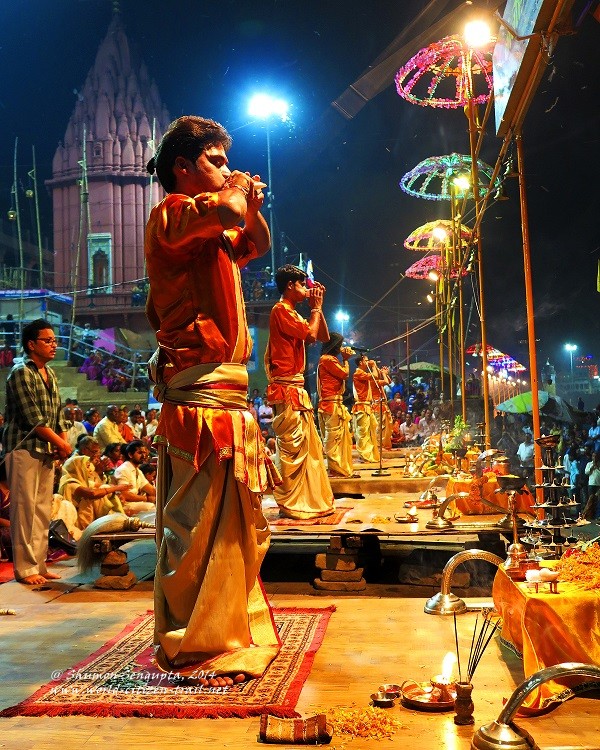
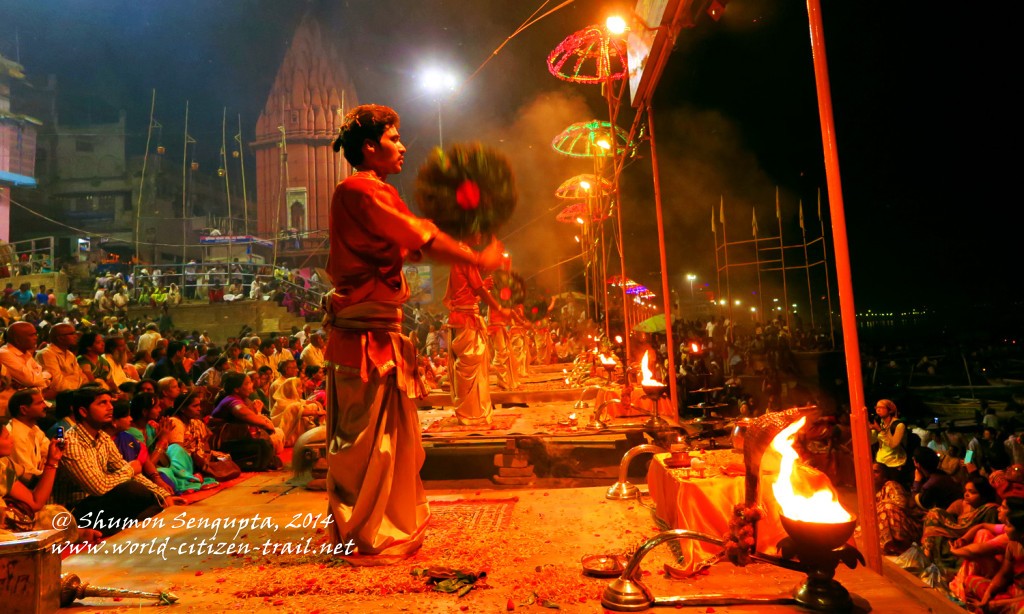
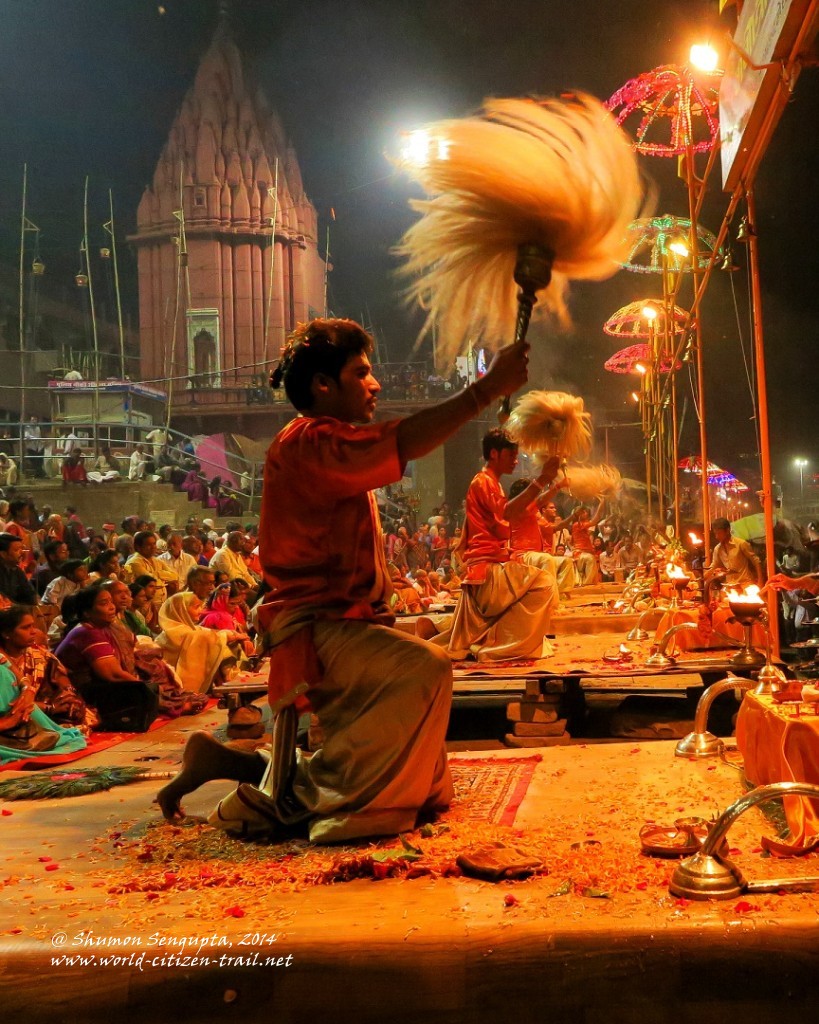
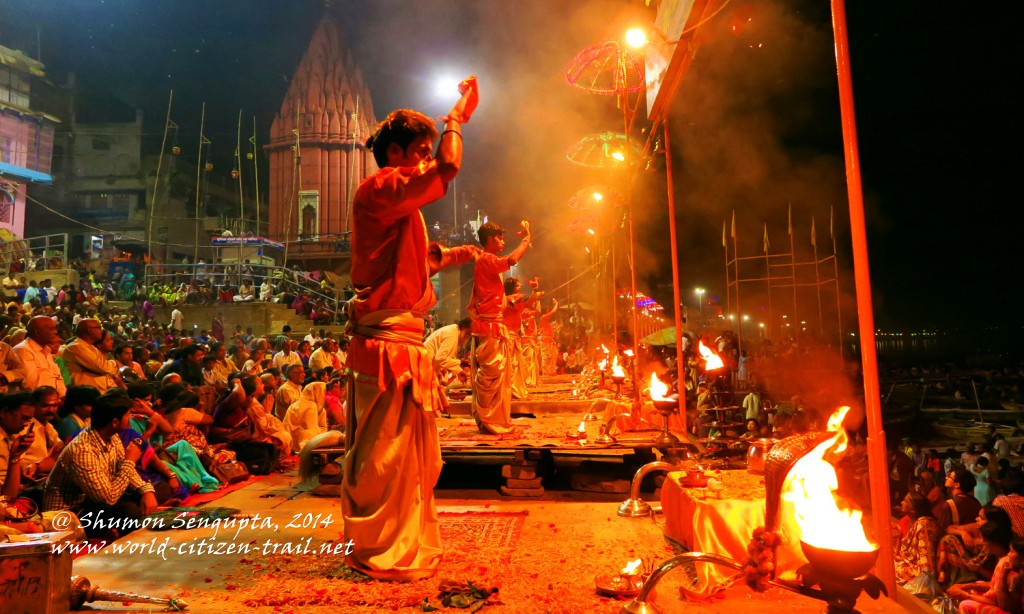
Incense and fragrant fumes are meant as lustration – a means of dispelling negative energies, while at the same time, representing the purified state of mind. The burning of lamps (the camphor lamp in particular) is also symbolic of the destruction / sublimation of the ego. And finally, a piece of ritual cloth (orange, red or white) symbolizes material culture and civilization.
One of the most beautiful aspects of the Aarti is that after the ritual is first dedicated to chosen Goddess / God (in four cardinal directions, indicating omnipresence of God or the transcendental entity), it is then dedicated to all observers who are also, in effect participants in the ritual. The latter dedication stems from a fundamental Hindu belief that divinity lies within each and every human being that everyone has a part of God, within.
Given that the ritual celebrates both material and spiritual aspects of Hindu life, it is essentially celebratory, joyous and life affirming in nature. It gives expression to the very joy of living.
We woke up around 4 in the morning to observe the Aarti held at the Assi Ghat, on the steps right below our hotel (Hotel Ganges View). The Aarti began at 4.30 in the morning and was a part of a daily morning program called “Subah-e-Benaras” which included a musical program, followed by a yoga session.
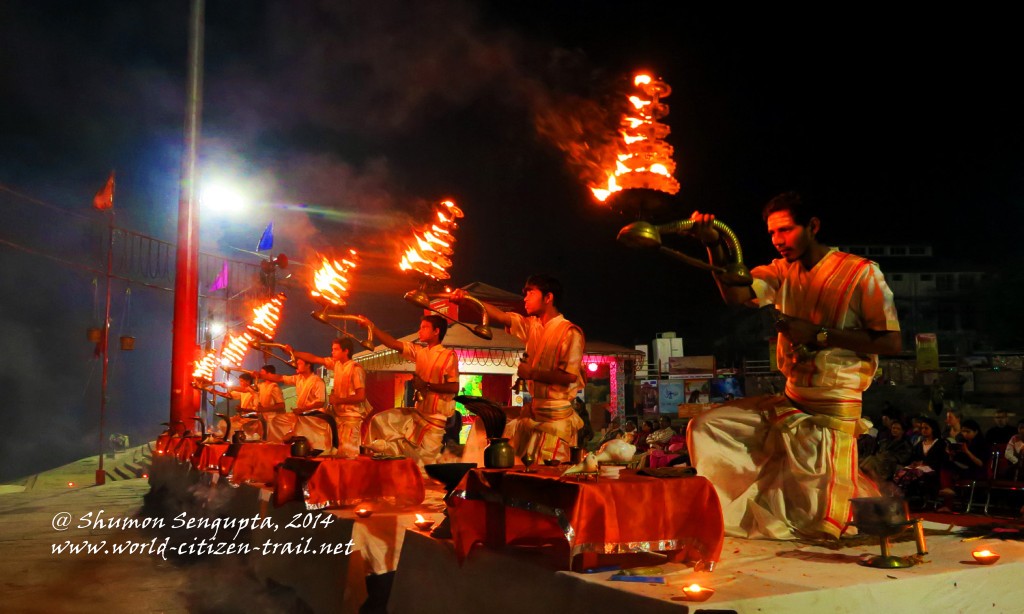
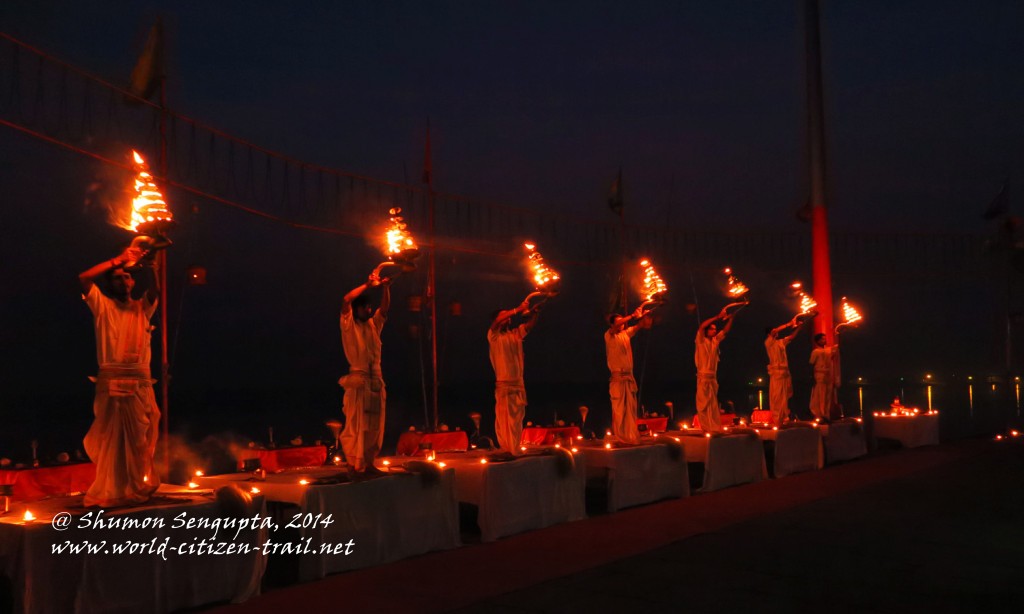
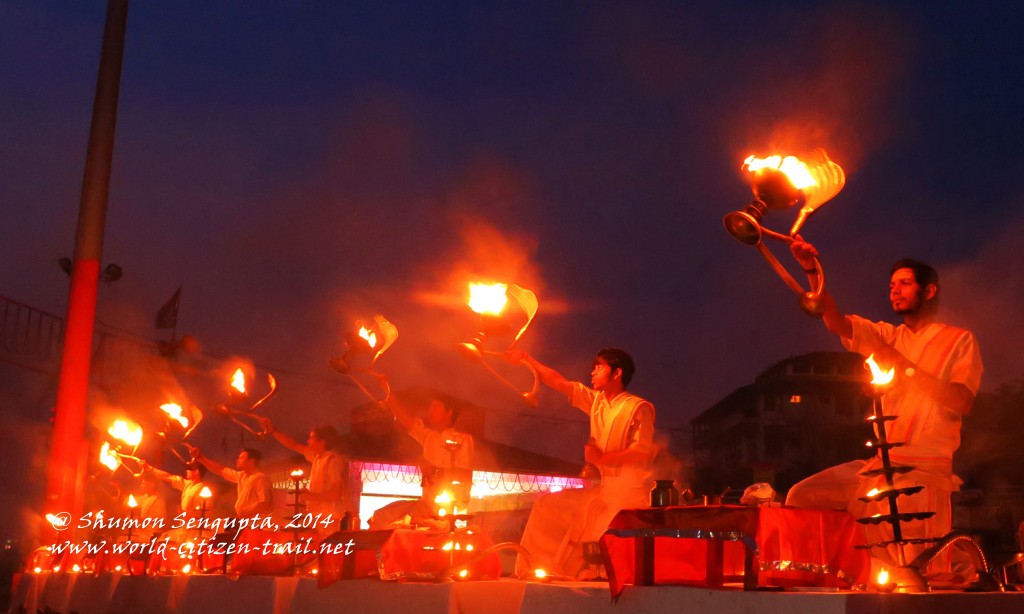
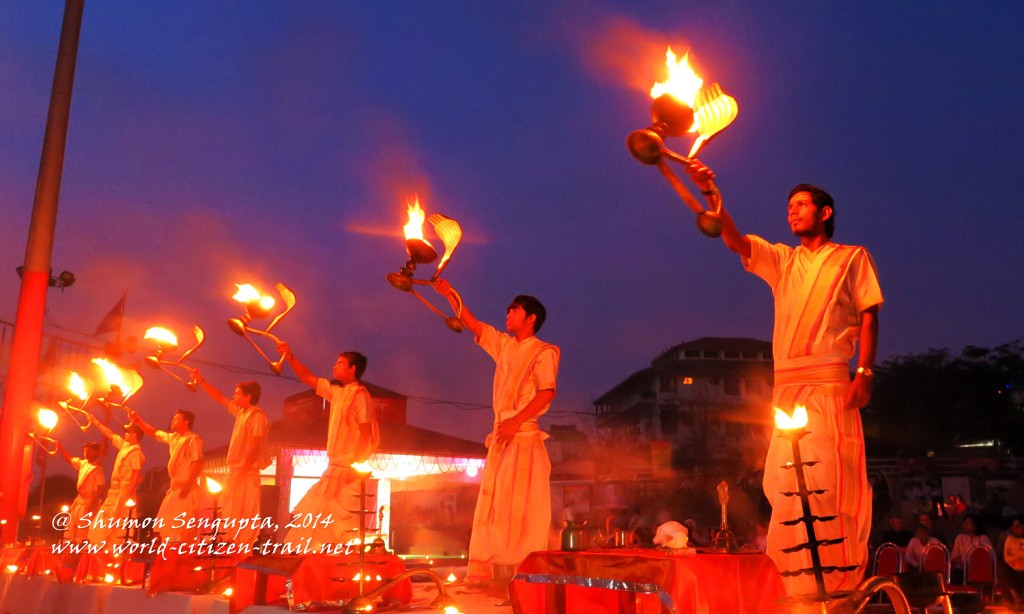
The ceremonial lamps were set ablaze while it was still dark and coupled with the burning incense, it created a sublime mood as the night gave way to the stillness of the early morning. There was a gentle river breeze and the soft pre-dawn light appeared from the horizon and spread all over, as the sun rose from across the river. We could sense world around us slowly came alive. It was almost as if the poignant mystery of our existence were being slowly revealed to us.
I was reminded of Rumi who had said “The breeze at dawn has secrets to tell you…” and I realized that it was such a precious privilege to be alive – to breathe, to see, to think, to feel, to experience the joy of living. The morning Aarti was an awakening of the body, mind and spirit; it left us with a sense of hope, of eager anticipation. It was a great way to herald the rest of the day.
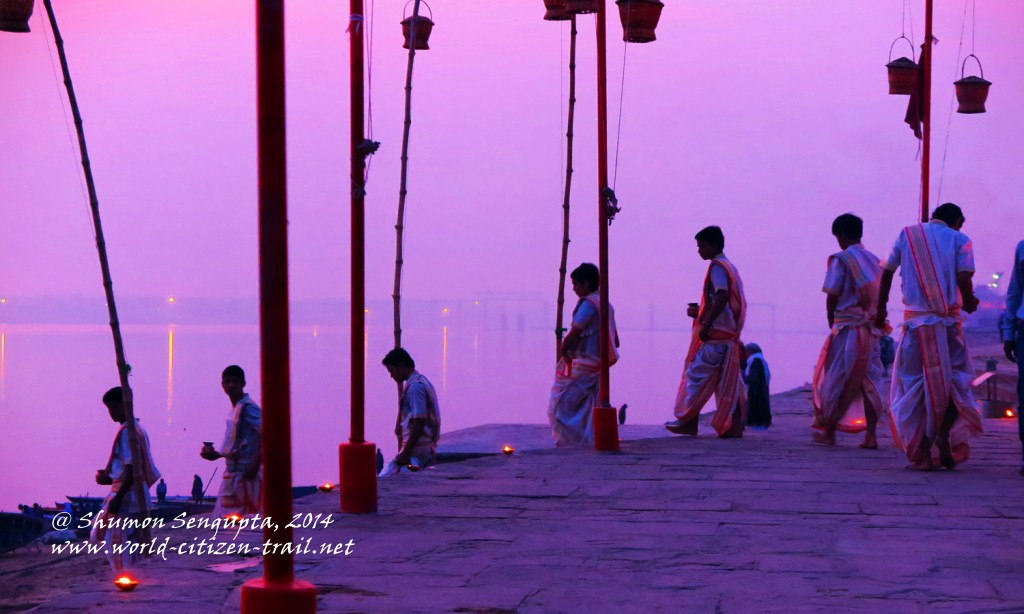


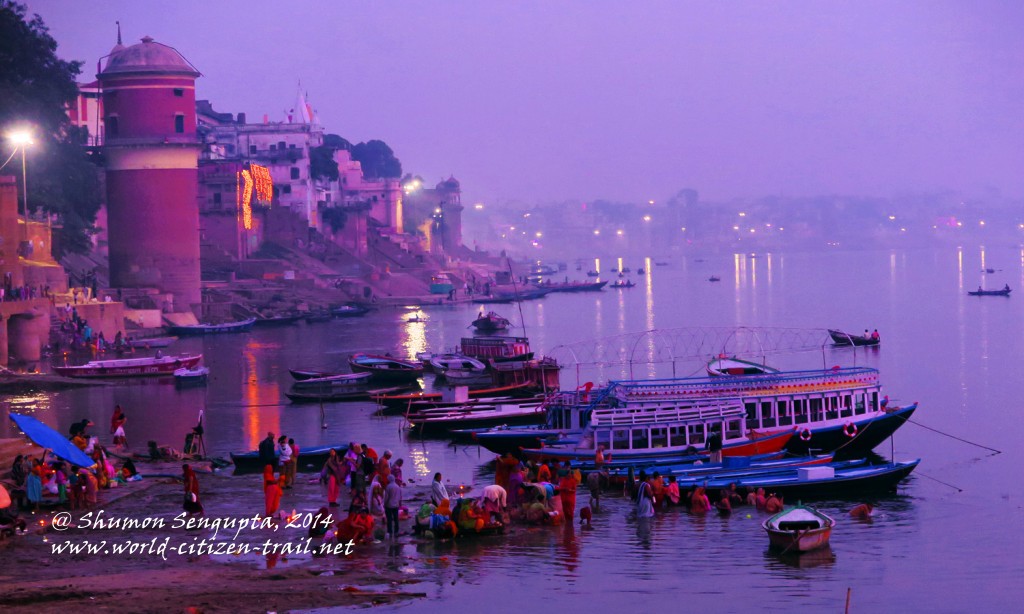
Later in the day we took a boat from Assi Ghat to attend the evening Aarti at Dasashwamedh Ghat. Going past numerous other Ghats, each with unique architecture, feel and character, we in front of the Dasashwamedh Ghat just as the ritual was about to begin. This evening, we saw the Aarti from the river, facing it head on, from our boats.
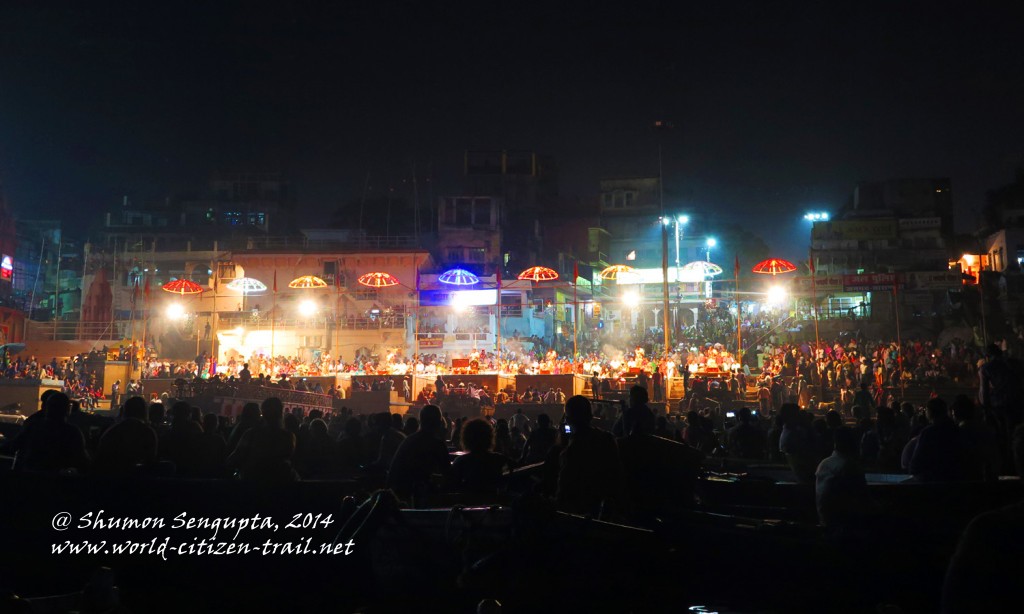
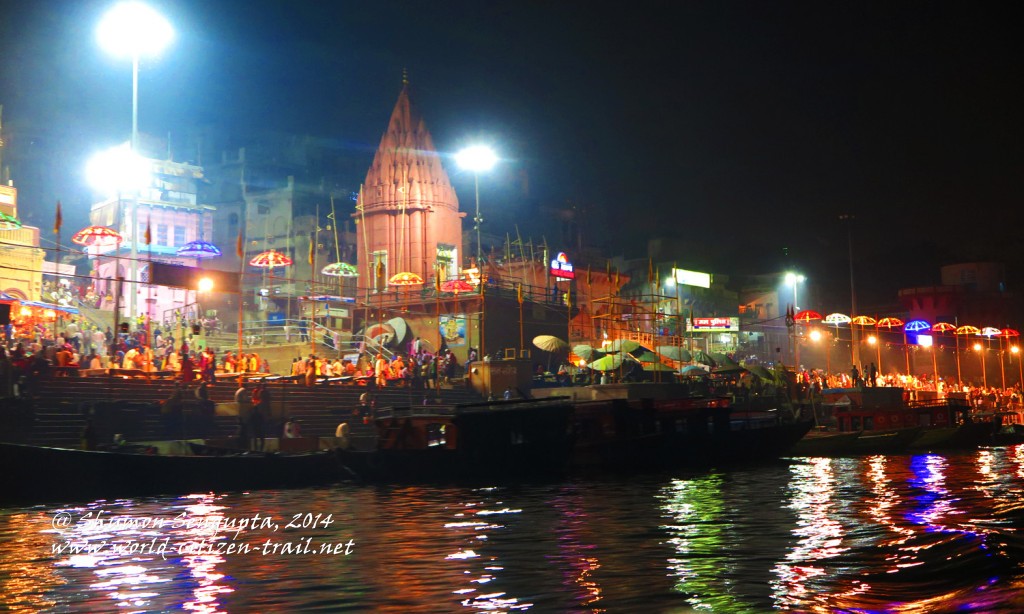
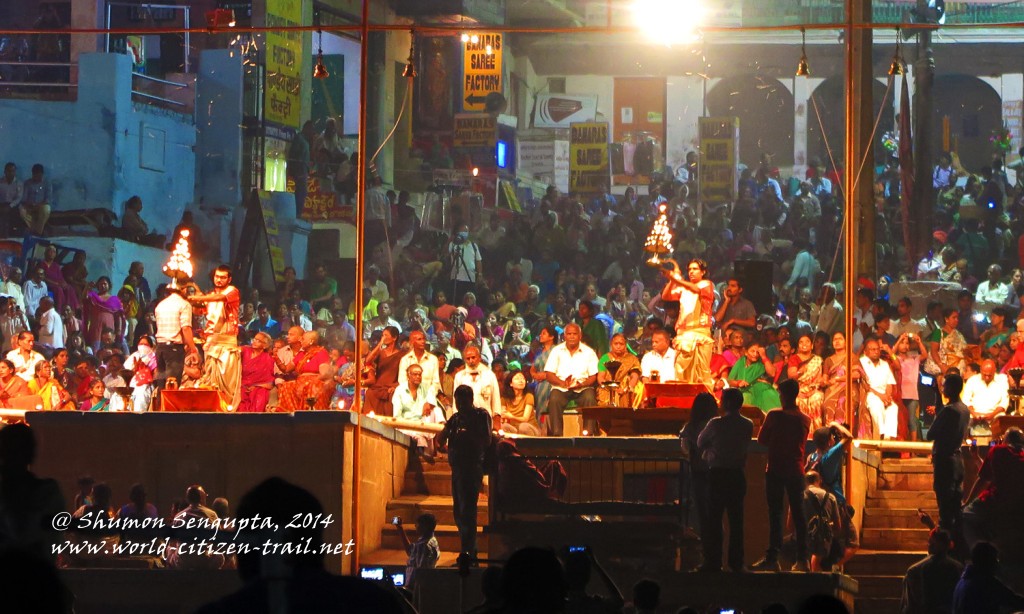
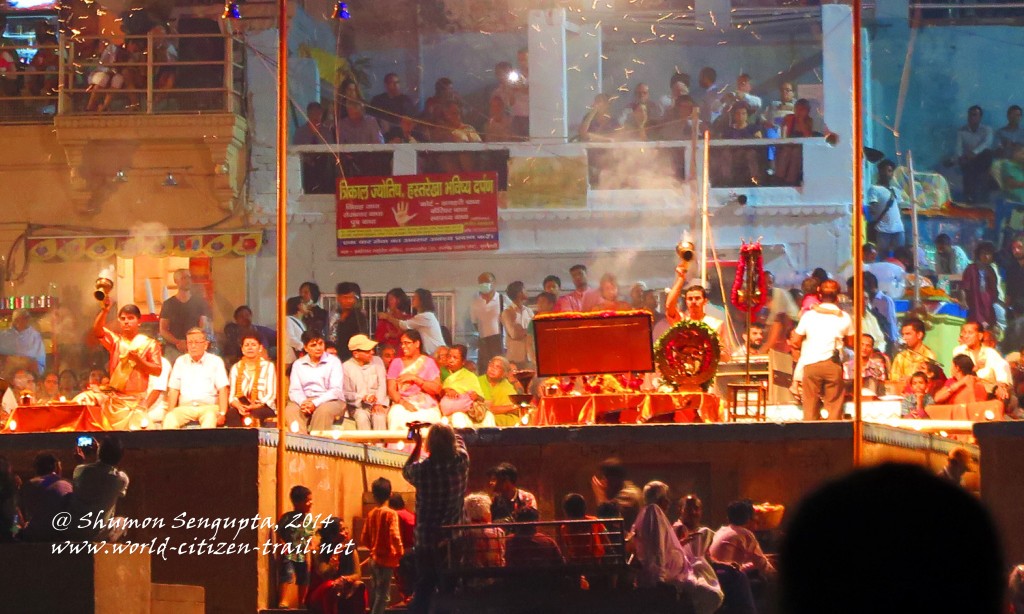
On the second evening, we went a bit early, got off our boat at the Dasashwamedh Ghat and took our position on the Ghat, next to rows of platforms from where the ritual was to be conducted.
A group of young priests who perform this daily ritual turned out in resplendent ceremonial dress – in off white silk dhoti (unstitched lower garment) and deep orange silk kurta (the upper garment), smartly bound with a long brocaded piece of cloth called the ‘aangavastram’.
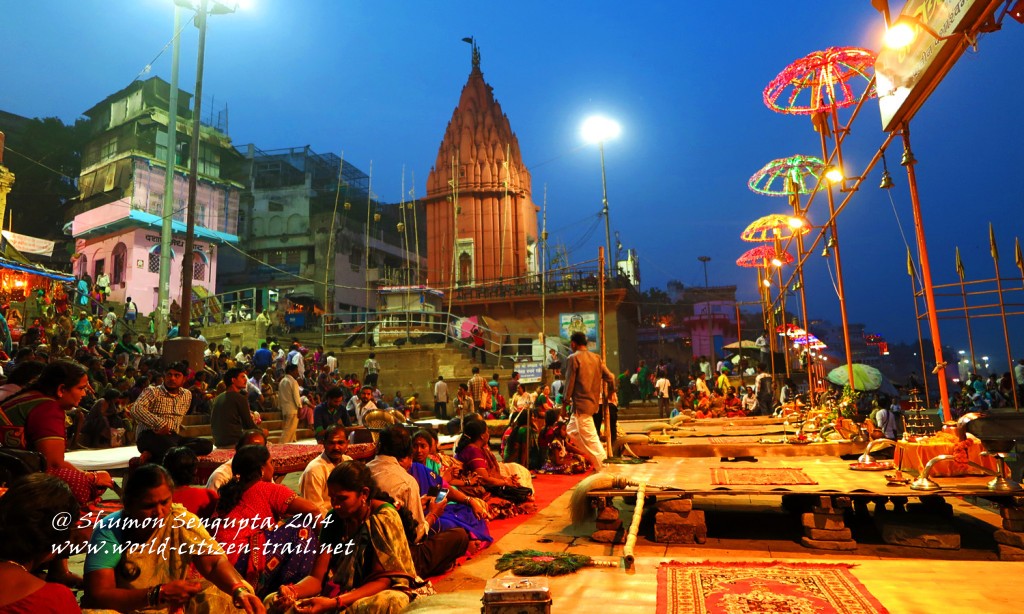
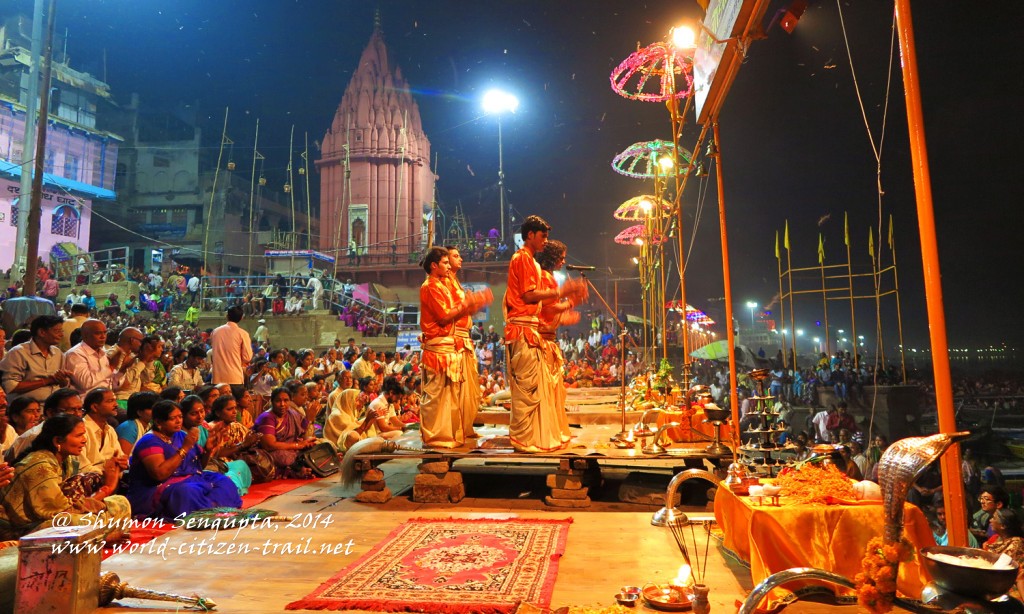
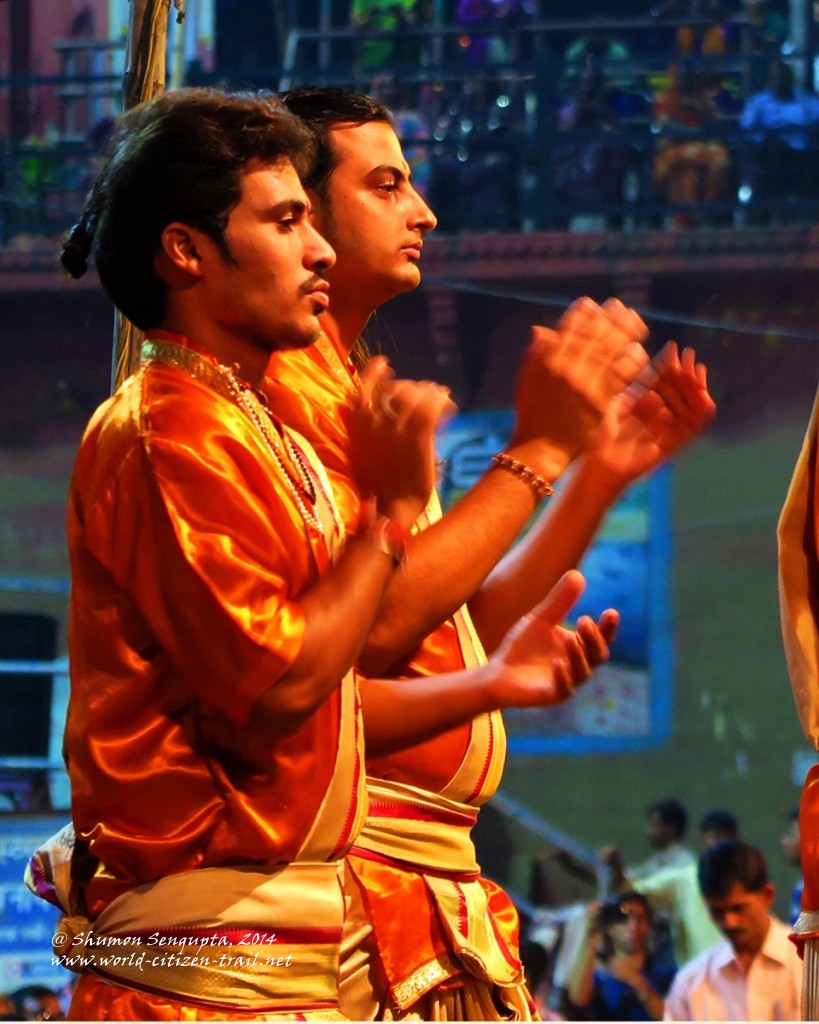
The evening Aarti started at 7 pm and lasted for 45 minutes. The young priests conducted the ritual to perfection – blowing of the conch, singing of devotional hymns and chants, and the pulsating sound of ceremonial bells, gongs and drums reverberated in the air, to the circular sway of large multi-tiered blazing oil lamps and a big brass camphor lamp, with a dramatic snake hood. The Lamps were so large that they had to be often held with both hands and the flames flared several feet high.
The redolent air, heady from the burning incense, other ceremonial fumes (‘dhoop’) and flowers combined with the sights and sounds to create a magical, enchanted feeling.
The alchemy of color, lamps blazing against the darkness, sound, smell and a sense of harmony and proportion in movement left us mesmerized. We sat silent on the Ghat by the Ganges, watching the spectacle. It was a unique aesthetic experience which dispelled the sense of uncertainty and anxiety that generally comes with the darkness. It left us feeling a sense of peace, joy and reassurance.
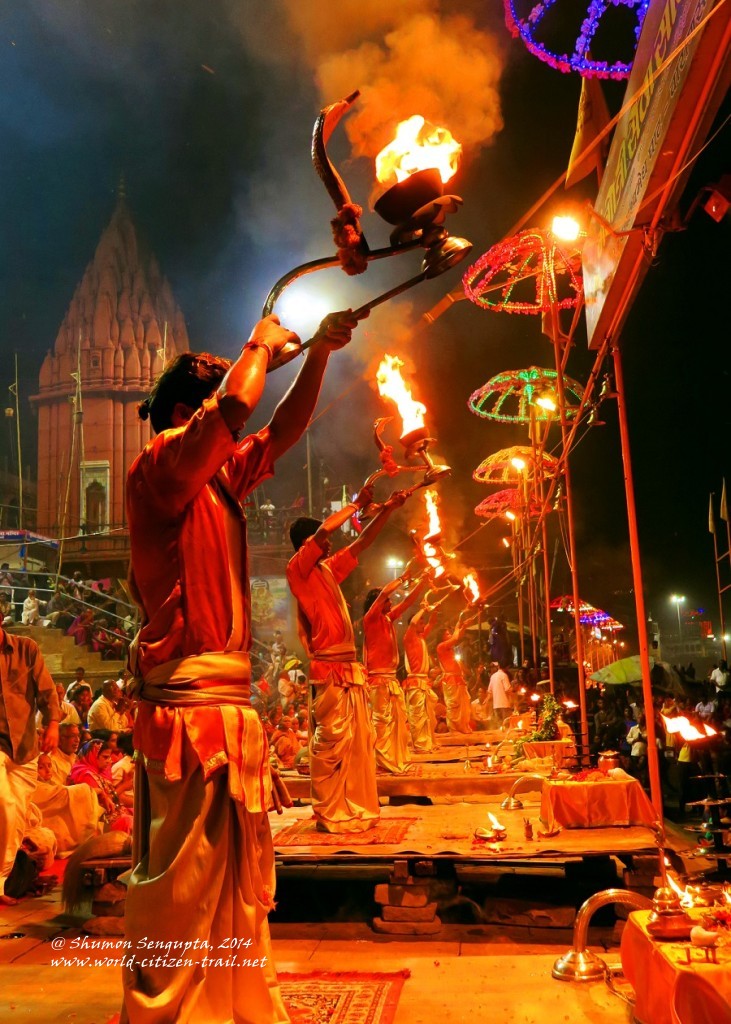
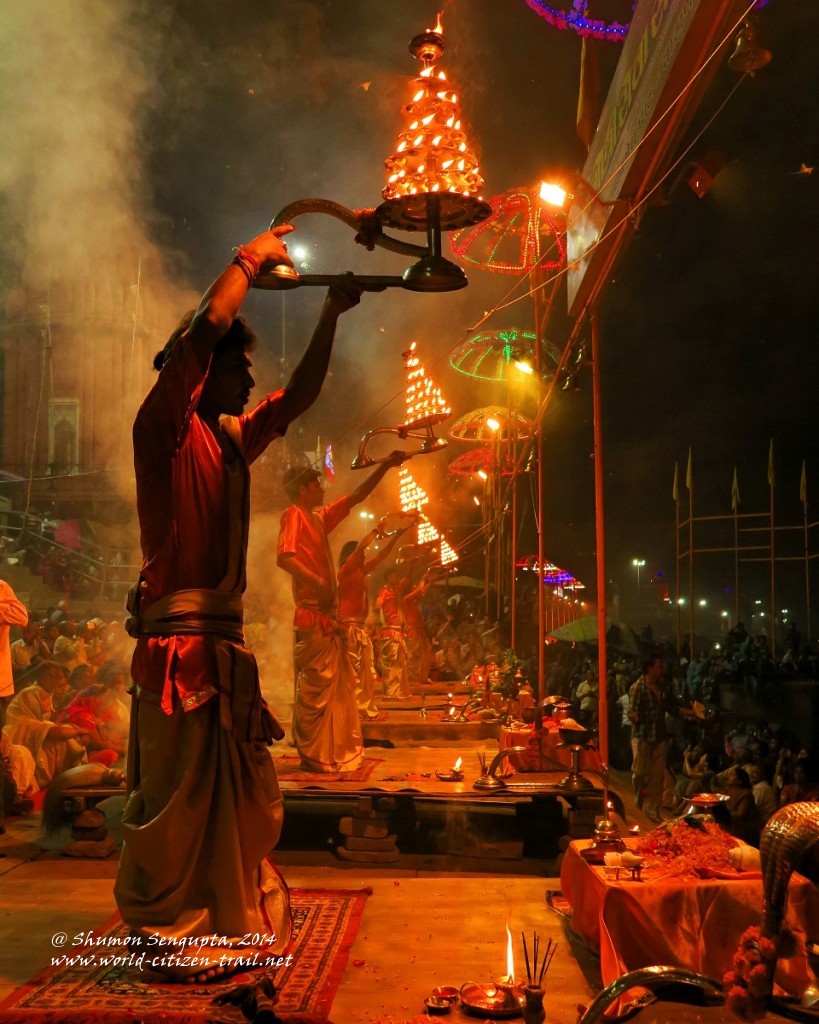

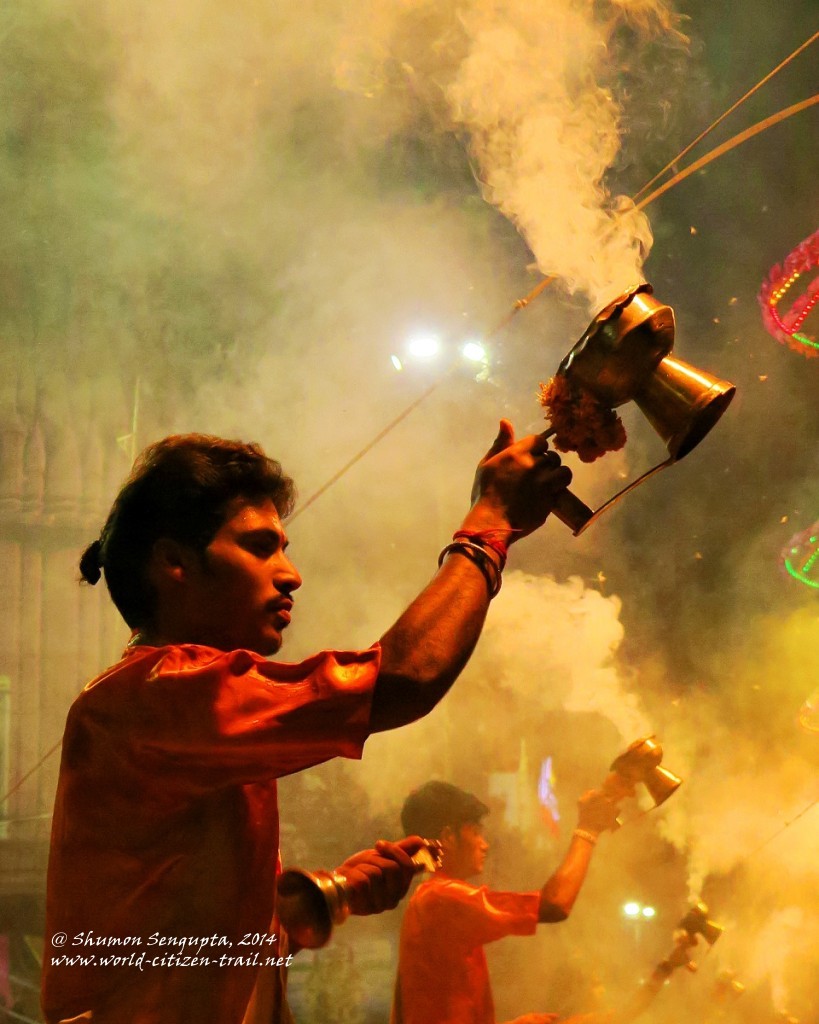

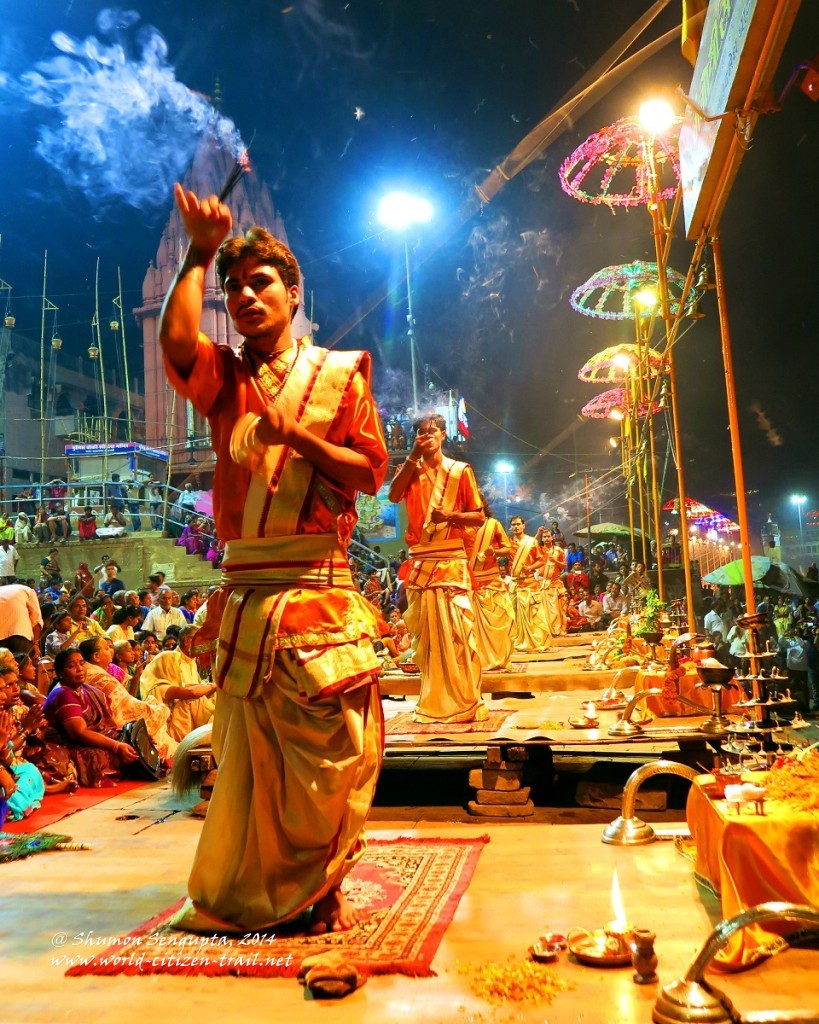
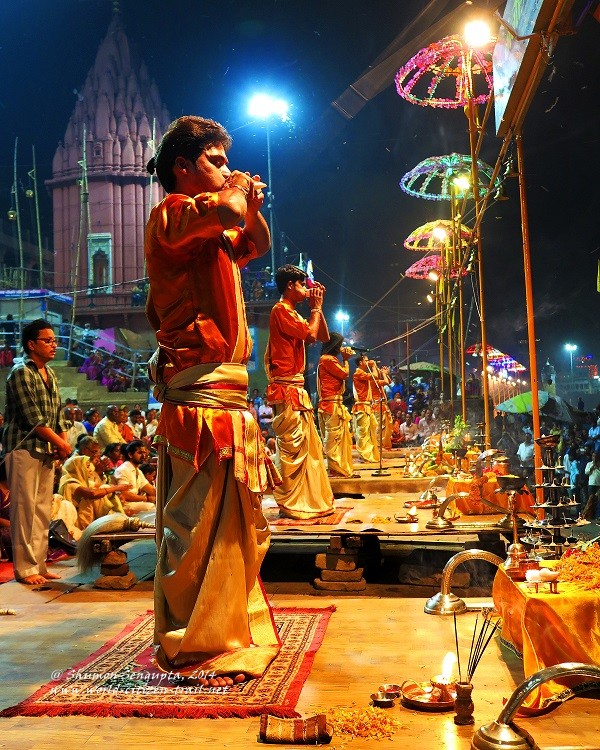
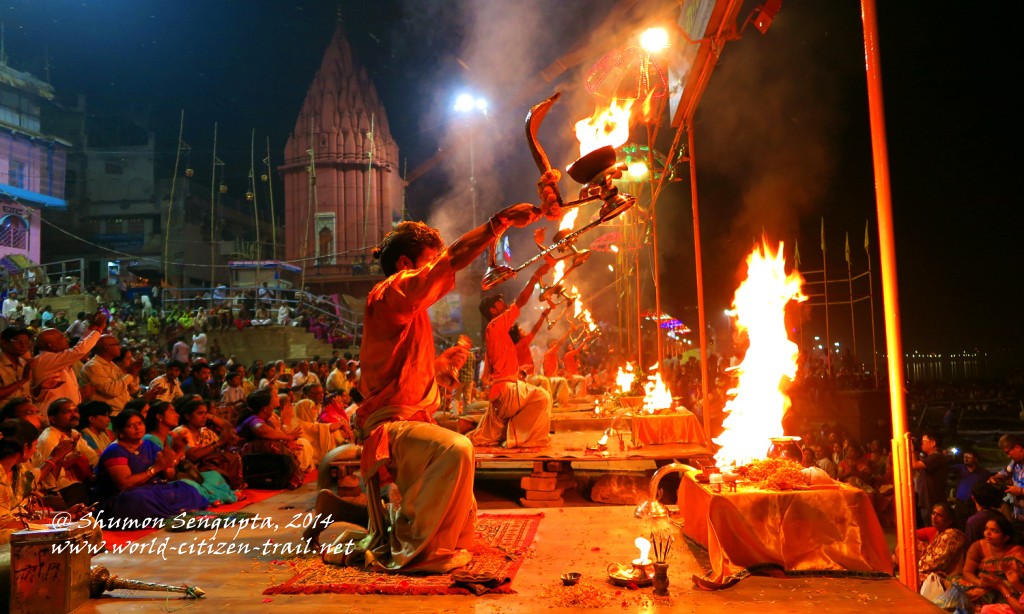
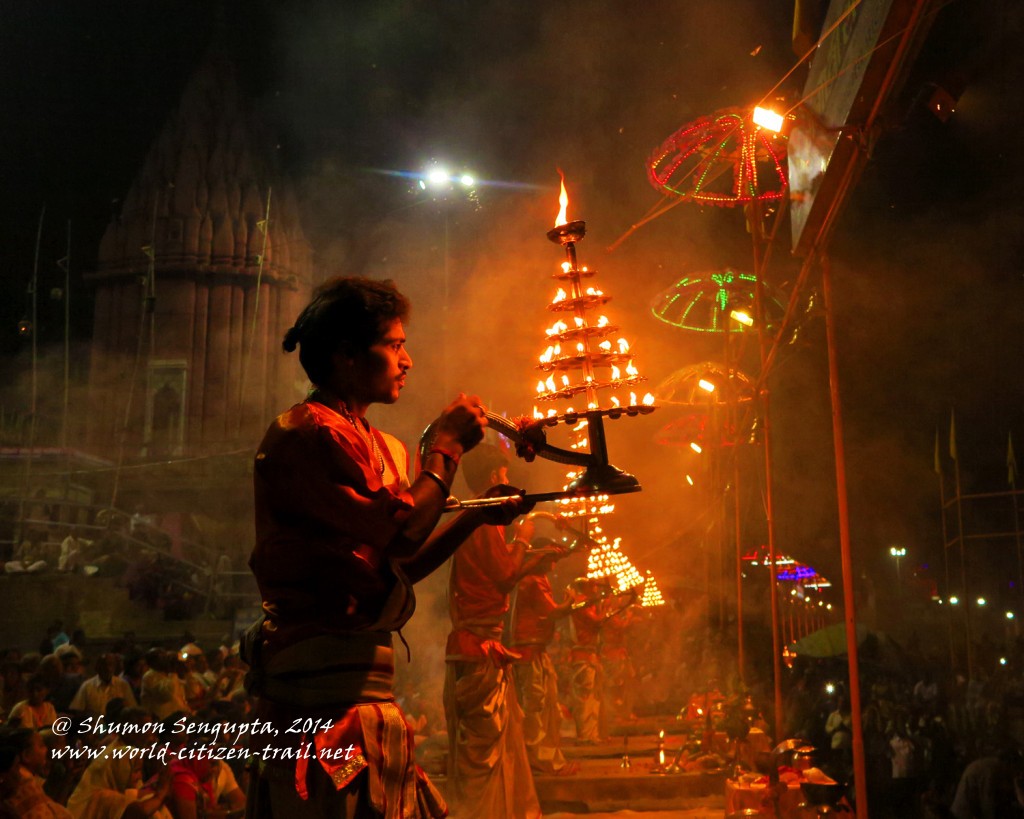
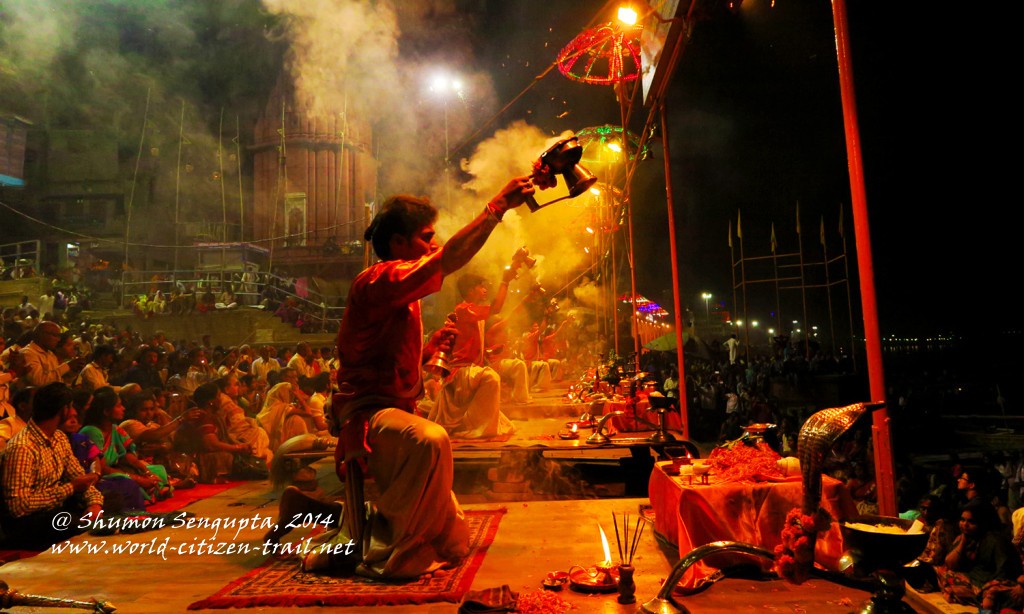
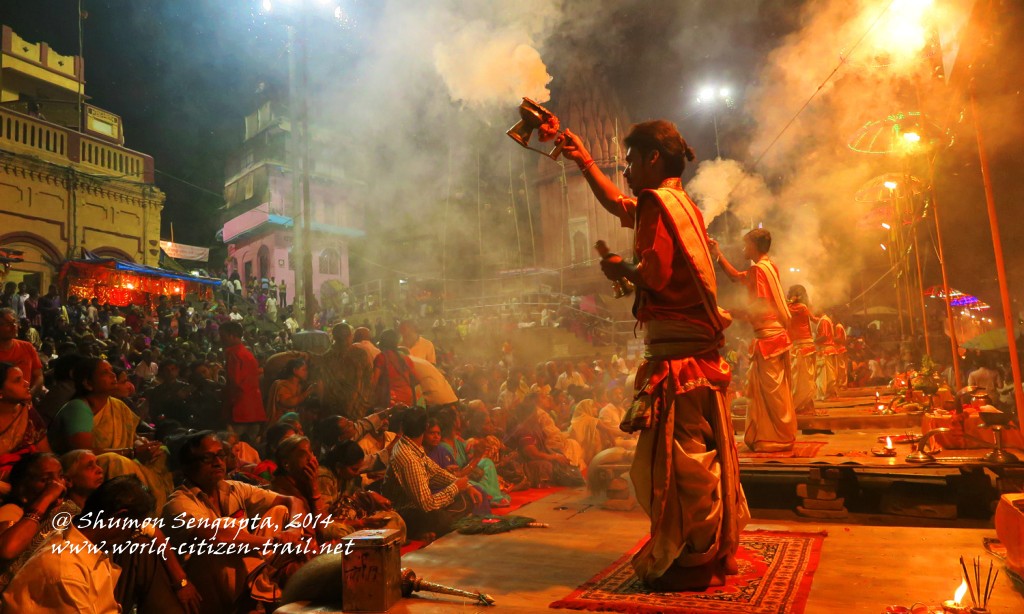
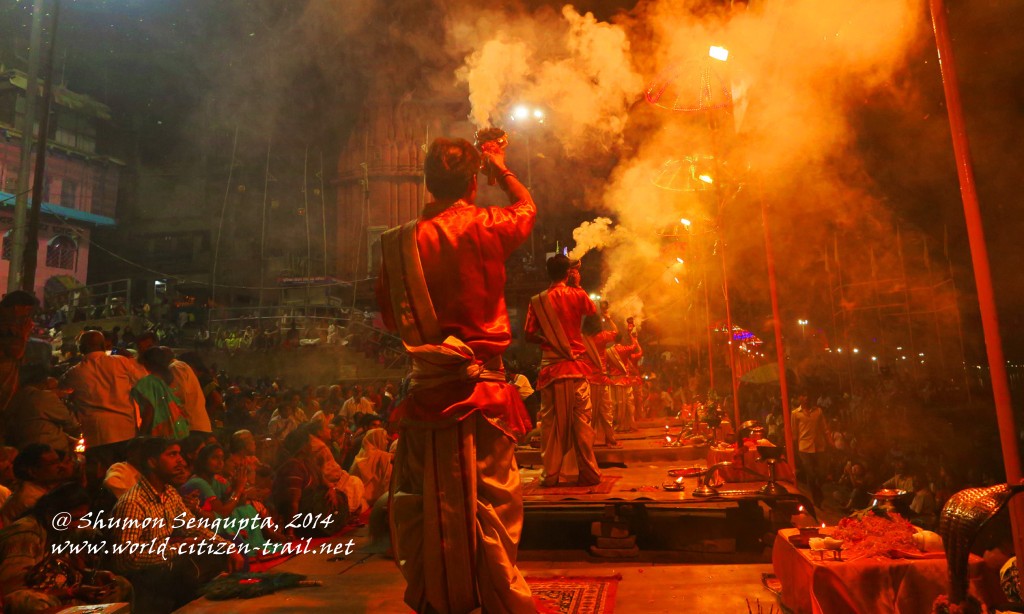
While on the one hand Hindu aesthetics is worldly, vibrant, rapturous and joyous, on the other hand, with the importance it places on the creation of a sense of ‘ananda’ (bliss), it has an equally potent effect of inducing an altered sense of consciousness – an experience that can be transcendental and spiritually uplifting.
Hindu rituals involve a conscious pursuit of beauty and is essentially a creative process, translated into the practice of art. In Varanasi, watching the Ganga Aarti, we realized that if Hinduism had engendered a profusion of art, art had found a potent and dynamic space for expression through this religion.
